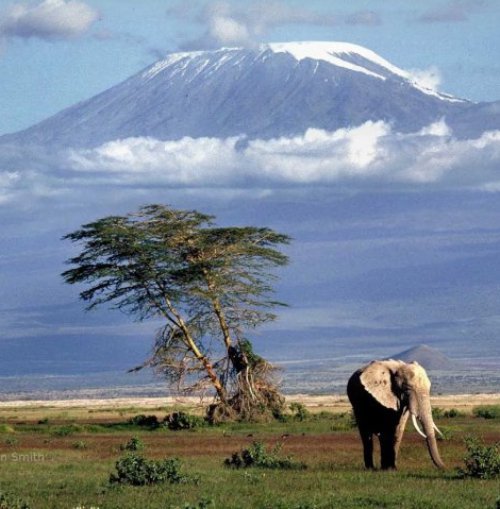15 Amazing Adventures in Africa - One Womans Travels from Cape Town to Kilimanjaro ...
By Deeceebee
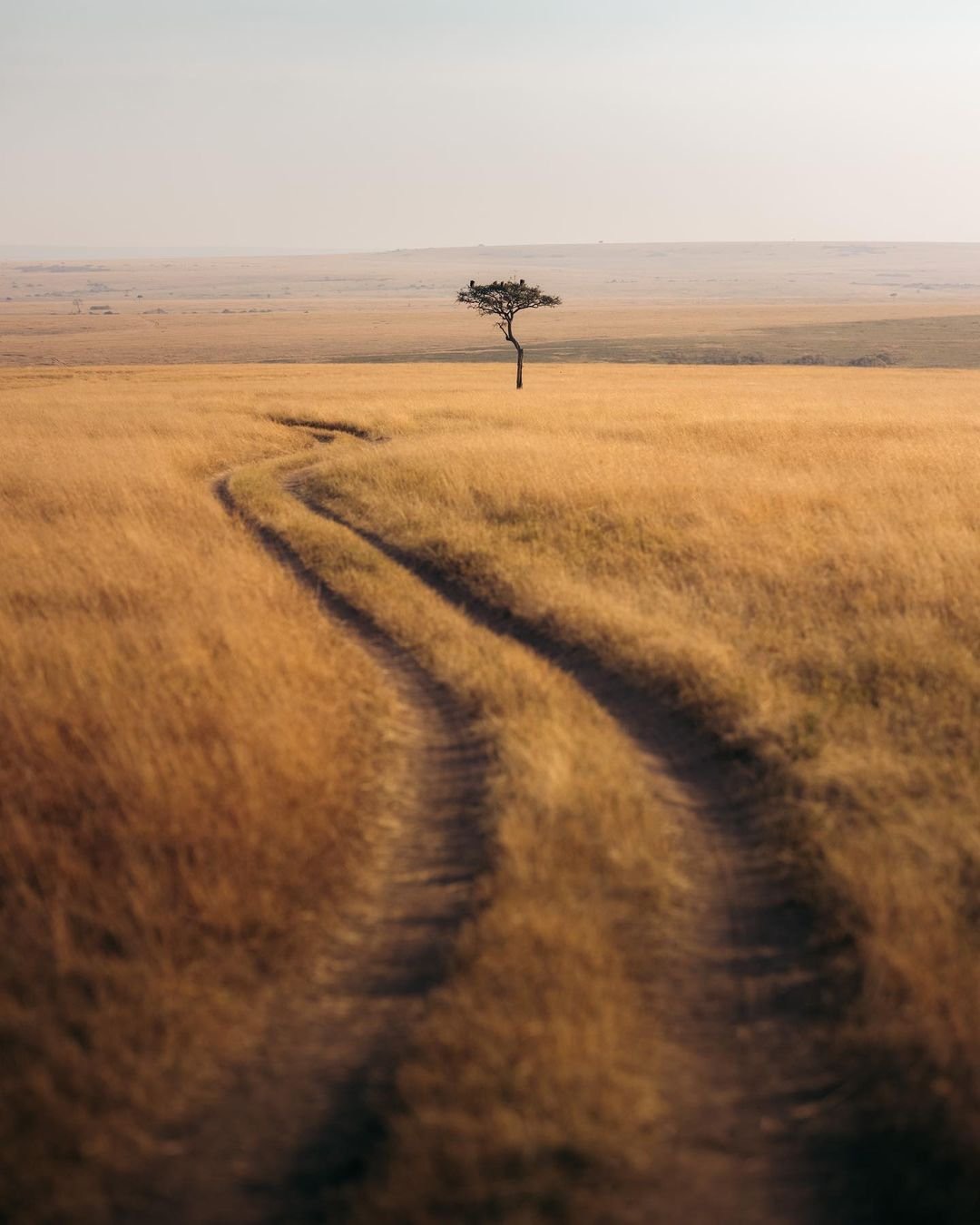
By Deeceebee

Travelling through deepest darkest Africa may be a whimsical and exotic daydream for many people – men and women alike. These days Africa is safer, more accessible and more beautiful than ever, geared for travelers and ripe for the taking.
Part of what makes Africa so attractive to me is not just that you can travel through some of the most incredibly beautiful places in the world, sample some of the finest wines, stay in some of the most luxurious hotels, drive just a few hours and find yourself in the heart of the bush – all on the smallest budget, but that it is an area of the world that still remains one of the most untouched and unspoiled areas of the world.
Traveling through Africa is one of the most rewarding and soul awakening journeys I have ever had the privilege of making, but it also proved to be somewhat frustrating, with many areas having little to no modern tourist infrastructure. Here you will be able to find out first-hand the real meaning of TIA –This Is Africa. But, it is one place in the world where an abundance of patience and a smile will get you everywhere.
Here is one woman’s account from her true African adventure and journey from the city of Cape Town to the heart of Tanzania at the feet of the majestic legend, Mount Kilimanjaro.
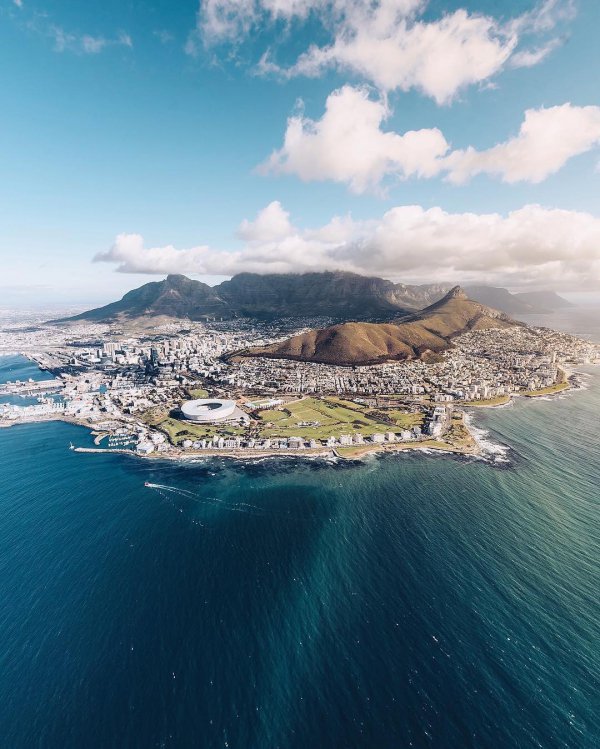 Cape Town is without a doubt, one of the most beautiful and sensational cities in the world to experience and there is nothing quite like it, which is why it makes it the best choice to start out on an African Adventure. And whatever perceptions you may have of Africa, South Africa or the African people – you can leave them all here, because it is everything you could never have thought it was, and more than your wildest dreams could have imagined and then some.
Cape Town is without a doubt, one of the most beautiful and sensational cities in the world to experience and there is nothing quite like it, which is why it makes it the best choice to start out on an African Adventure. And whatever perceptions you may have of Africa, South Africa or the African people – you can leave them all here, because it is everything you could never have thought it was, and more than your wildest dreams could have imagined and then some.
Landing at Cape Town International Airport is quite a mixed bag of events. Stepping into what appears to be first world country facilities, brings you to the harshest realities of African poverty lying in wait just around the corner. On the outskirts of the airport’s landing strips are never-ending strips of another kind – rows and rows and rows of shanti houses, ‘’shacks’’, cardboard abodes, running water, fences, washing lines, electrical lines, dusty streets, soccer games, and gaggles of wide-eyed children all peering back at you as a stark reminder of just how many people here still live below the bread line.
I chose to be collected by my hotel – they offered a complimentary shuttle service and let’s face it, nothing really beats a freebie whether you’re on a budget or not. It is quite safe to drive in Cape Town during the day and night, although it may be preferable if you are landing at stupid O’clock to be collected from the airport and get a hire car the following day– I for one, would not like to get lost in any foreign city in the world myself at any time of the day.
We went to many different corners of what felt like the entire earth on our journey, but it was here, at the foot of the glorious
Table Mountain where I fell hard and fast for a city that was not my own. Cape Town has a pulse, a dynamic complexity with so many shades and facets you had better not blink or you will miss out, and it’s hard to say what any particular favorite part was – other than I had lost my heart completely.
Everywhere you look there are slices of New York, New Zealand, France, Australia, Africa and more. Quaint cobbled streets leading up to the finest fashion boutiques, never-ending rows of sidewalk cafes, the smells of freshly brewed coffee, the chatter of people, the heavy traffic noise and the sounds of distant bongo drums from a nearby market are never far away. 10 minute’s drive anywhere will take you from the top of the mountain to the footpaths along the sandy beachfront and to the trendiest beachfront cocktail bars where you can mingle with the rich and famous.
 I made my way from the city into South Africa’s iconic wine country in Stellenbosch, just about 30 minutes’ drive out of the city, back towards the airport and further away to the foothills of the Cape Fold Mountain Range. What is really amazing was that you could be transported to another completely different part of the world in a matter of minutes in South Africa – the first of many intoxicating African lures.
I made my way from the city into South Africa’s iconic wine country in Stellenbosch, just about 30 minutes’ drive out of the city, back towards the airport and further away to the foothills of the Cape Fold Mountain Range. What is really amazing was that you could be transported to another completely different part of the world in a matter of minutes in South Africa – the first of many intoxicating African lures.
This stunning, historic town has roots way back in the 1600s and evidence of its colorful past can be found everywhere. Rolling vineyards and patchwork quilted farmlands surrounded the town that was nestled in the basin of the valley. The best advice I could have had for our journey to the wine lands was to get a driver, download a map and take some grub with you on the trip to soak up the wine – and what good advice it was! South Africa may come across as all hip, happening and laid back, but they are seriously clamping down in their drinking and driving regulations here, which is well overdue.
The Stellenbosch wineries are stunning, the scenery is unparalleled and the wine – like nothing I have ever tasted, and my favorite part was that it was easy on the budget. Who would have thought that you could buy so much award-winning wine for less than the cost of a glass of nothing near of the same quality at home? It was impossible to see everything in one day, and there was an urgent need for a post wine tasting nap in any event, so the day came to a deliciously hazy end.
The route that was decided on to travel from Cape Town to Kilamanjaro was along the eastern South African coast from the city, along the legendary Cape Garden Route, heading north up to Lesthoto, Swaziland, crossing over to Mozambique through Lake Malawi and eventually ending up in Tanzania – home to Mount Kilimanjaro.
The idea of the trip was not to rush and to do as much of the travelling by car, exploring the nooks and crannies at leisure, rather than being herded into all the right places by an over-enthusiastic tour guide, getting home exhausted and wondering what it was that I remembered in the first place. Africa has an ambiance, a vivid raw energy, and so many delights, that I wanted to make sure I felt every single one.
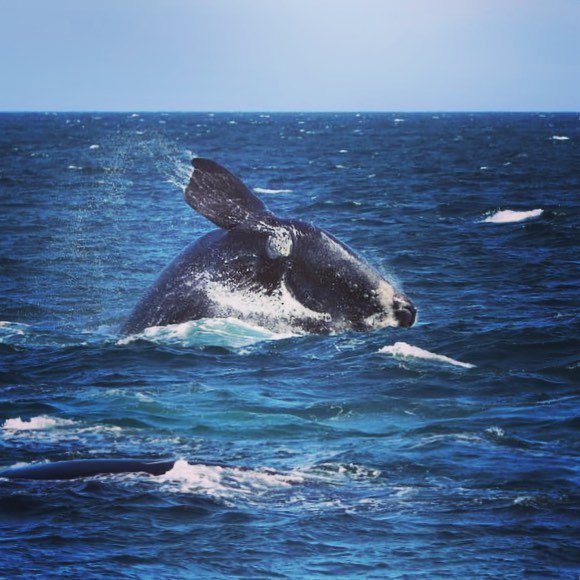 Moving on from Cape Town I headed along the Overberg region making our way to the Garden Route. Heading right down towards the coast, I wanted to see for myself what is considered one of the world’s top whale watching destinations – Hermanus. What was once a small coastal holiday town is now a bustling metropolis, a seaside community for the wealthy sweeping along the coastline to include a collection of suburbs from the mountainous mansions to the humble beach front cottage – it’s all here.
Moving on from Cape Town I headed along the Overberg region making our way to the Garden Route. Heading right down towards the coast, I wanted to see for myself what is considered one of the world’s top whale watching destinations – Hermanus. What was once a small coastal holiday town is now a bustling metropolis, a seaside community for the wealthy sweeping along the coastline to include a collection of suburbs from the mountainous mansions to the humble beach front cottage – it’s all here.
Whale season booms between June and November on the coast and we were there over a weekend. It was buzzing with people spilling out of restaurants and pubs onto the sidewalks. The weather was absolutely glorious, with the sun beating down and it was the ideal place to relive happy childhood memories with ice cream melting down my chin. It was very difficult to pack up and move on again; it was pure paradise.
 Further along the coast, I stopped at De Hoop Nature Reserve and decided to spend a night there – if you love nature, this is one place that will blow your mind. The reserve is home to an abundance of birdlife and is perched on the sparkling fringes of a marine reserve. Putting my feet up with a cold beer, watching the whales frolicking in the bay, far from hundreds of other people trying to do the same, was pure bliss.
Further along the coast, I stopped at De Hoop Nature Reserve and decided to spend a night there – if you love nature, this is one place that will blow your mind. The reserve is home to an abundance of birdlife and is perched on the sparkling fringes of a marine reserve. Putting my feet up with a cold beer, watching the whales frolicking in the bay, far from hundreds of other people trying to do the same, was pure bliss.
 Sticking close to the coastline, the next move was heading out towards the Garden Route. This iconic scenic area is heaving with an abundance of wildlife and is a true nature playground. Surrounded by marine reserves on the craggy coast of the Indian Ocean, taking you all the way through from Mossel Bay to the Wilderness National Park, the Garden Route is famous for the resplendent Outeniqua Mountains and Tstisikamma Forest. You can zip line and fly through the treetops right in the middle of the forest, so that sounded like something I definitely had to check out.
Sticking close to the coastline, the next move was heading out towards the Garden Route. This iconic scenic area is heaving with an abundance of wildlife and is a true nature playground. Surrounded by marine reserves on the craggy coast of the Indian Ocean, taking you all the way through from Mossel Bay to the Wilderness National Park, the Garden Route is famous for the resplendent Outeniqua Mountains and Tstisikamma Forest. You can zip line and fly through the treetops right in the middle of the forest, so that sounded like something I definitely had to check out.
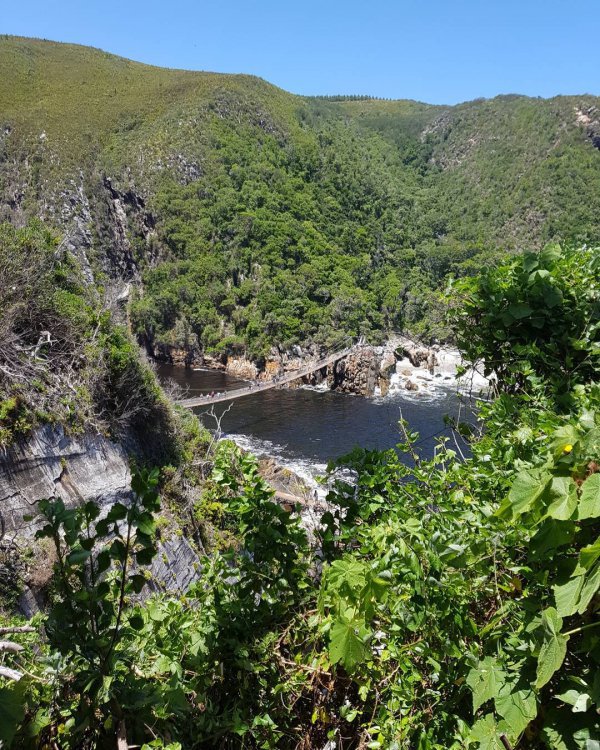 The Tsisikamma Forest is nothing at all what I expected and upon arriving at our destination near Storms River, I was immediately enthralled by the dramatic forest of ancient Yellowwood trees. Touted as an eco-friendly adventure, and the first of its kind in Africa, I could hardly miss out on the chance to give this zip line a whirl. Although once things started getting serious and the safety talk was in full swing, I would be lying if I said my stomach was not lurching ever so slightly.
The Tsisikamma Forest is nothing at all what I expected and upon arriving at our destination near Storms River, I was immediately enthralled by the dramatic forest of ancient Yellowwood trees. Touted as an eco-friendly adventure, and the first of its kind in Africa, I could hardly miss out on the chance to give this zip line a whirl. Although once things started getting serious and the safety talk was in full swing, I would be lying if I said my stomach was not lurching ever so slightly.
Once you have been strapped in and everything has been explained, you hop into the car and drive a short way to the first canopy station. Each group has a knowledgeable, experienced and patient guide who leads his or her charges along the tour, and once I got going, the fear in the pit of my stomach subsided completely as I was transported into another world, way up above the forest floor.
Surrounded by the brightly colored birds they call the Kynsna Loeries flitting in and out of the treetops and plenty of Vervet monkeys, there are ten separate zip lines and canopy stations that you glide between. The whole thing took 3 hours, but it felt like a smattering of minutes and was without a doubt one of the biggest highlights of my African journey.
 Still on the glorious coast, my journey brought me to the doorstep of the stunning Eastern Cape Province. Choosing to spend a night, which ended up being two, I opted for the breathtaking coastal holiday resort town of Jeffery’s Bay. J-Bay, as it’s affectionately known, is South Africa’s resident surfing capital. What started out on my travels as just a pretty place to stay, turned out to be an adventurous gem, hence the 2-night stretch.
Still on the glorious coast, my journey brought me to the doorstep of the stunning Eastern Cape Province. Choosing to spend a night, which ended up being two, I opted for the breathtaking coastal holiday resort town of Jeffery’s Bay. J-Bay, as it’s affectionately known, is South Africa’s resident surfing capital. What started out on my travels as just a pretty place to stay, turned out to be an adventurous gem, hence the 2-night stretch.
I am not a surfer myself, and apart from a brief teenage fling with a surfboard, I had no idea really what all the fuss was about - until I literally wandered into the Jeffrey Bay Surf Musuem. This incredible showcase of 50 years of surfing really brings to life the intoxicating love affair between a surfer and the ocean. It inspired me to book a surfing lesson.
Although I don’t think I will ever become a pro surfer, the two-hour lesson was awesome and I will definitely do it again. I did a spot of snorkeling in the rock pools, drank beer with the sand between my toes and the sun on my face, and went to sleep with the sound of the waves in the distance. This is a place I definitely want to come back to.
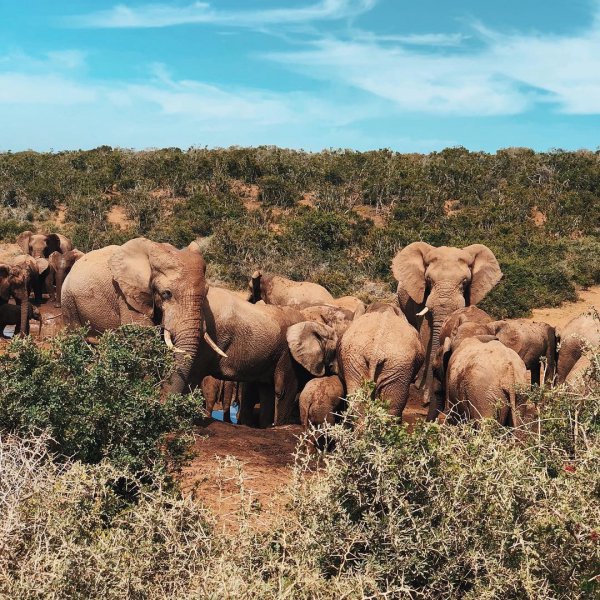 Reluctantly I headed out the following day feeling very far away from Tanzania and not feeling like I was in deepest darkest Africa at all. Little did I know, just over 200km down the road that was all going to change at Addo Elephant Park.
Reluctantly I headed out the following day feeling very far away from Tanzania and not feeling like I was in deepest darkest Africa at all. Little did I know, just over 200km down the road that was all going to change at Addo Elephant Park.
The contrast to where I had been along the coast, in the cities and the forests was dramatic. All of those vivid, rich African scenes associated with deepest darkest Africa was coming alive right before my eyes, and for the first time on this journey, it felt like I was in Africa and not just chilling out on a summer holiday.
I stayed right in the heart of the reserve itself in Kuzuko Lodge – charming thatched chalets perched on the hills that housed every available modern luxury and amenity I could possibly ask for; including air conditioning which is delightfully welcome as the heat was something else. Waking up coffee in hand looking out over my private balcony down into the reserve below where the notorious Big 5 roamed with nothing but the sounds of the birds and the crickets and wrap around panoramic views, brought every reason I planned this trip in the first place immediately to life.
But the early morning game drive didn’t allow for much gazing out into the distance, I had to get moving. We had booked a cheetah walk as part of a 3-hour tour and I was not entirely sure what to expect, just that I couldn’t miss up an opportunity like this one. Our guide took us out into the bush in an open top Landover, crawling along at snail’s pace making it easy to stop when we saw any wildlife. The waterholes were our biggest treat - seeing endangered elephants meandering about with their troops sloshing about in the mud and being able to get so close it was breathtaking.
The cheetah walk was something else. We actually left the safety of the vehicle with a ranger of course, who was armed just in case, which we were initially told was absolutely not allowed. Our ranger explained to us that the cheetahs were not tame, however, through a long period of mutual trust-building exercises, the cheetahs had become tolerant of the snaparrazi – Us – taking pictures of them up close and personal.
My stay in Addo ended far too quickly, but unfortunately, I couldn’t stay longer as I had a flight booked from Port Elizabeth Airport, near Addo to our next stop – Maseru in Lesotho.
 It was a short flight, but cut out quite a bit of driving, which was starting to cramp my style and we covered over 500km – a day’s drive – with a 45-minute flight.
It was a short flight, but cut out quite a bit of driving, which was starting to cramp my style and we covered over 500km – a day’s drive – with a 45-minute flight.
Lesotho, as I was about to discover was, like the rest of Africa that I was about to experience, truly an assault on the senses. A charismatic mix of history, tradition, culture, and scenery, you almost need to steady yourself as you take it all in. Lesotho means ‘’ Magical Kingdom of the Sky’’ and whoever came up with that name certainly knew what they were talking about.
Although Maseru is a city and the capital of Lesotho, it was nothing like I had ever experienced in my life. Evidence of the swift hand of modern infrastructure juts out of the lush green valleys surrounding the metropolis almost disagreeably, and the stark contrast of where nature and the 21st-century meet is a dramatic one. This little slice of what was previously part of Southern Africa way back when, gives you a first-hand glimpse of what this part of Africa must have been like before industry and the big bad businessman took over.
Unfortunately, the harsh reality of poverty is everywhere and it’s hard to not let it affect you, with almost half of the population living below the poverty line. Even though the locals face daily hardships that many a traveler have yet to encounter, and more than likely never will face in their lives, the Basotho people are proud, traditional, warm and welcoming.
 I had been advised to ditch the monstrous 4x4 rental and rather explore the neighboring villages on Basotho ponies. I joined a group and we made our way on to a somewhat remote dusty town – Malealea – where we spent 3 nights at the breathtaking Malealea Lodge, hiking and exploring the surrounds on our excellent mounts. The highlight for me was the trip to the waterfall, and the chance to see real-life bushman paintings. I was fascinated with the local people’s everyday attire; richly colored blankets worn even on the hottest days.
I had been advised to ditch the monstrous 4x4 rental and rather explore the neighboring villages on Basotho ponies. I joined a group and we made our way on to a somewhat remote dusty town – Malealea – where we spent 3 nights at the breathtaking Malealea Lodge, hiking and exploring the surrounds on our excellent mounts. The highlight for me was the trip to the waterfall, and the chance to see real-life bushman paintings. I was fascinated with the local people’s everyday attire; richly colored blankets worn even on the hottest days.
I found out that it is an integral part of their culture and the costume is worn with immense pride and grace. The blankets are made from 90% pure wool, which helps regulate their body temperature even when the sun is beating down. You can be sure I didn’t leave Lesotho without one of my own.
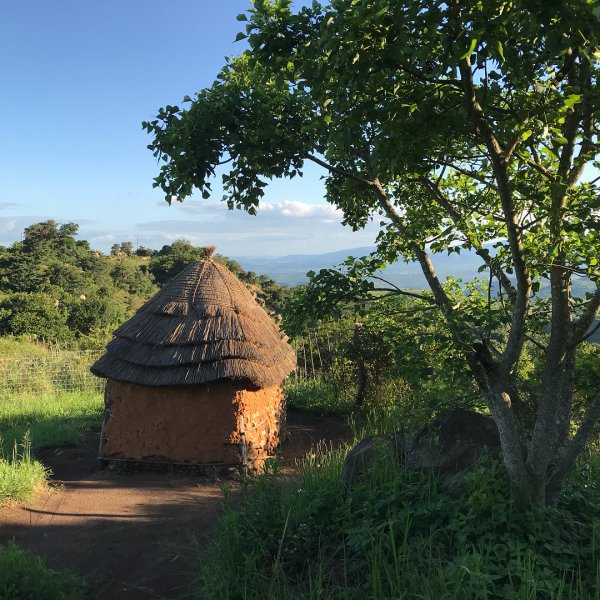 Hopping on the next flight once back at the airport in Maseru, I headed off to Manzini, in the Kingdom of Swaziland. I had found out about a Swazi village cultural tour and had booked it before I arrived, planning on spending my first night here. Heading out of the city, about half an hour’s drive from Manzini, my little tour party arrived at kaPhunga Village.
Hopping on the next flight once back at the airport in Maseru, I headed off to Manzini, in the Kingdom of Swaziland. I had found out about a Swazi village cultural tour and had booked it before I arrived, planning on spending my first night here. Heading out of the city, about half an hour’s drive from Manzini, my little tour party arrived at kaPhunga Village.
Far away from the peering camera eyes of tour buses and fancy tourist traps, I had stepped into the soul of Africa, where time has literally stood still for what seems like forever. Smiling villagers, gaggles of giggling kids, dust, chickens and lots of round grass huts surrounded by sweeps of rolling green hills made me feel as if I had wandered into a parallel universe.
Everybody greets you with ‘’Sawbona’’ – hello, and our guide gave us a quick crash course in titbits of the local siSwati language. The most moving part of this particular leg of our journey was the local school, which was started by our tour guides no less. It continues to run and flourish solely on the donations made by people who take part in this cultural tour. We were invited to spend a half hour with the kids explaining to them where we came from, who we were and where we were going to – all visitors are invited to speak at the school, hoping to broaden the children’s horizon and there was much excitement at some new faces.
That night as I sat by the flickering campfire after a delicious traditional Swazi meal, the campfire laughs and chats going around left me with a few quiet moments just appreciating the soul-restoring surroundings and it made me feel somewhat guilty and sad that we live in a world where we think we need so many material items, have to work hard, miss out on our children’s lives and our own rapidly-waning one, simply to buy ‘stuff.’ And yet, around me, there are generations of people who don’t have electricity, have no idea what an iPad is and are completely and utterly content out here in the bush surrounded by their loved ones. This simple place really made me think.
After a surprisingly good sleep on a straw mat on the floor of a real grass hut, it was sadly time to say goodbye and be on my way to the next stop in Swaziland’s neighbor – Mozambique.
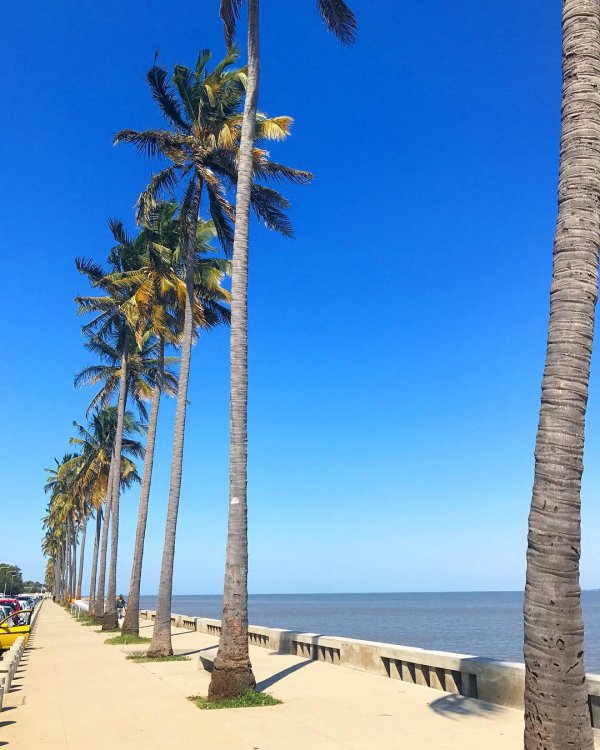 A quiet and contemplative drive from Manzini took me over the border to the capital city of Mozambique – Maputo.
A quiet and contemplative drive from Manzini took me over the border to the capital city of Mozambique – Maputo.
Arriving at the Namaacha border post was an experience all on its own. Now I know how some celebs must feel when just out in town picking up bread and milk. People come out of nowhere running up to your car. I must admit I didn’t expect it and I did feel quite nervous at first, not sure what to do really, it was all a bit overwhelming. But luckily my ‘’fans’’ saw I already had a plan of action, and made my way to the queue to get my visa into Mozambique, and they ran off to accost another approaching vehicle.
Although Maputo itself is considered safe, I had heard too many stories about police looking for excuses to hassle tourists, taking their passports away, robbing them looking for brides and the like, that I decided that was not the kind of adventure I was really looking for and I decided to make my way to a resort in the popular tourist area of Ponta d'Ouro.
But first I had to get there. I popped down to get on the ferry from Catembe in Maputo, which took me and my vehicle and all baggage and groceries to Ponta d’Ouro.
Ponta d'Ouro is a small Mozambique town and I made my way to a rental house right on the beach about 5 minutes’ drive out of the town itself.
The surroundings are like something straight out of a National Geographic magazine, and no matter how many times I blinked and look again, it always took my breath away. The never-ending strips of white, velvety beach sand form perfect fringes to the breeze ruffled and startlingly turquoise surf that lapped onto the shoreline. And with a craggy mountain outcrop as a backdrop overlooking the captivating panorama, I suppose I could be forgiven for thinking I had arrived in heaven itself.
One of the things that has been on my own personal bucket list since as far back as I can possibly remember is to be able to swim with dolphins and I was about to tick that one right off the top of my to-do list.
 I met the wild dolphin encounter team and the guide who was to take a few people out into the water. Because we were swimming in the wild, snorkeling over a shallow reef we didn’t see any dolphins for a very long time – which we were warned about beforehand.
I met the wild dolphin encounter team and the guide who was to take a few people out into the water. Because we were swimming in the wild, snorkeling over a shallow reef we didn’t see any dolphins for a very long time – which we were warned about beforehand.
But just as we were about to give up hope, we were treated to a sight and an experience I will hold in my heart for the rest of my life. The dolphins are inquisitive and playful and come right up and so close to you that you are almost too scared to move in case the disappear as quickly as they arrived.
We were briefed not to touch or attempt to feed the dolphins because they were still wild animals and to be honest, it was a natural reflex I really had to fight while the dolphins were all around me. This was truly a very special memory I will never forget as long as I live, and if it is on your bucket list, make a point of doing everything to get there and experience it.
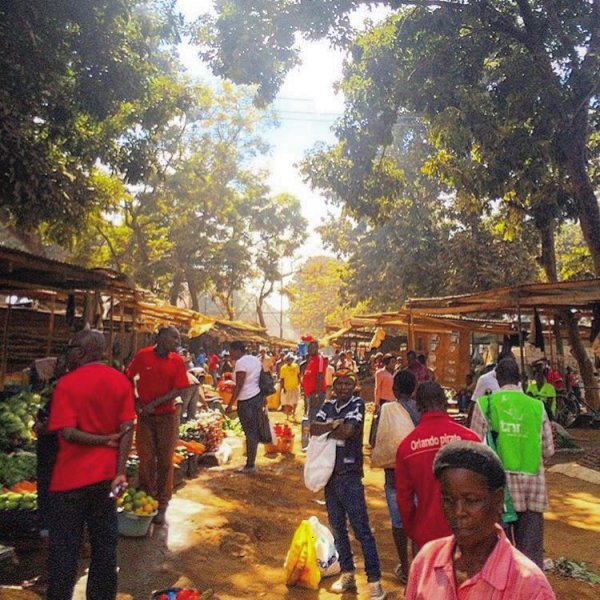 Once again the magic was ending too soon and I was packing up getting ready for a flight to Lilongwe, Malawi, the second last stop before Tanzania and the majestic mountain I was so longing to see.
Once again the magic was ending too soon and I was packing up getting ready for a flight to Lilongwe, Malawi, the second last stop before Tanzania and the majestic mountain I was so longing to see.
Affectionately known as the Warm Heart of Africa, Malawi has a well-earned reputation for having the most welcoming people. And I certainly came to understand all about that almost immediately. The Malawian people are extremely hard working, courteous, proud, family-orientated and charismatically vibrant, which makes it impossible not to be instantly affected by their effervescent energy and joy for life.
I headed out to the Old Town to check out the markets which had acquired quite a reputation among travelers I had met along the way. I discovered quite quickly that Lilongwe is a large city and not easy to navigate without a car, so I was immensely grateful for my trusty 4x4.
Old Town requires you to have some nerves of steel and is truly an assault on the senses, so you will need to have your wits about you. Energetic, bustling and chaotically busy, once you get over the shock, it actually has quite a vibe and nothing that I expected. The handicraft work available at the market was incredible and I wished I had more space to fill up the car a bit more.
Everything was for sale from jewelry to miniatures of warthogs, rhinos, elephants, giraffes and bush pigs, carved and beautifully polished from wood, stone, and precious stone. As soon as you linger just a second close to a stall, you are literally engulfed by over-eager sellers, many of whom have similar pieces for sale. I was particularly offended by one very pushy tourist who had a pile of items before her, barking at the seller (and crafter) that she was not going to spend these prices. The prices are below rock bottom; what these people ask for their incredible works of art are embarrassing and this woman was completely humiliating the stall owner, I felt ashamed.
Ambling along back to the car, really struggling to find space to pack all of my newly found treasures – I managed to pack all my little stone and wooden creatures in yet another little crevice in the car, smiling quietly to myself. I was completely ignoring the practicalities of getting this home with me (Excess baggage? What’s that?)
I was making my way to the Lilongwe Wildlife Centre and I was really looking forward to seeing the animals. The centre is a sanctuary for injured, rescued and orphaned animals of the wild and since its inception in 2007, the centre has gained a name for itself all over the world. Surviving almost entirely on donations from visitors and organizations as well as volunteers from the local community, doctors, veterinarians and outreach programs, the conservation facility is growing in leaps and bounds.
I went on a guided tour through the sanctuary and learned the remarkable history and story behind every rescue. Bella the lioness was rescued from horrendous conditions in a zoo in Romania having suffered horrific and cruel abuse and will spend the rest of her days pampered and cared for here at the sanctuary, along with Kambuku the Leopard (also rescued from a small cage at the zoo) and Lucky the yellow baboon (rescued from a market with shocking injuries from a rope imbedded in his neck) who can never return to the wild.
I wish I had more time to spend here and stay to volunteer, help out, educate and join this incredible team who are on call 24 hours a day 7 days a week, 365 days a year, with limited resources and an insane amount of commitment and love. So instead I decided to adopt a few of the animals (one wasn’t enough) and put down a donation towards one of their on-going projects. I have photos and certificates that I will proudly frame when I get home of my 3 new ‘’children’’ – Bella, Lucky, and Kambuku. I will definitely be keeping in touch with the folks there and stay up to date with the comings and goings and adventures of the center and the animals on their Facebook page. This is what this trip was all about, the people and the animals and I was gaining an incredible, life-changing perspective about my own life just by having the privilege of being in the company of others along the way.
Packing up, I was getting ready to make my way to Cape Maclear, en route to Mumbo Island, in the Lake Malawi National Park. A journey of 3-4 hours lay ahead, the last part by boat, but I wanted to stop off in Monkey Bay first and for a change, the roads were good and I didn’t mind the drive.
 Monkey Bay was awesome, clearly a very touristy town, but somehow that didn’t seem to ruin any of the ambiance. It was the last proper town before I got to the island, and although the town got its name from an abundant monkey population, I didn’t actually see any. It is incredibly beautiful with many people coming from all over the world to experience some of the best diving and water sports on the shores of the sparkling
Monkey Bay was awesome, clearly a very touristy town, but somehow that didn’t seem to ruin any of the ambiance. It was the last proper town before I got to the island, and although the town got its name from an abundant monkey population, I didn’t actually see any. It is incredibly beautiful with many people coming from all over the world to experience some of the best diving and water sports on the shores of the sparkling
Lake Malawi. I headed out with some others to Cape Maclear which was about 20 minute’s drive away and arrived at the Mumbo Island reception where we boarded a boat. The boat took us over to the small island to a resort that regularly features in the lists of top hotels in Africa.
I stayed here for almost a week and it was bliss. Looking out over the most perfect deep teal bay, my little rustic reed tent hideaway made me feel like I was the only person on the island, which wasn’t far from the truth. Surrounded by nature and sinking deep into my hammock with the obligatory G & T and a few good books, it was official – I never wanted to leave.
I did manage to force myself to part with my hammock and head out into a kayak onto the bay, enjoyed some snorkeling and swimming in the crystal clear water joined by none other than some otters! I found out that it is the spotted neck otter and they are quite tame and are the perfect swimming companions – what an awesome extra surprise, I could hardly believe I was still in Africa.
I played a few games of bawo, G&T in hand, and the plan was to hike, but it was a full-time job relaxing and I went for a morning walk only once. Everything at the camp is eco-friendly and the staff was fabulous - this was without fail pure paradise in Africa and I would spend the rest of my life saving up even if it meant I could only come once more.
I boarded my last flight from Lilongwe to Kilimanjaro in Tanzania with a happy and sad heart, not really believing the trip of a lifetime was nearing its end. Lilongwe is some 2 hours ahead in time from Kilimanjaro, which felt quite bizarre considering that the flight time was only an hour and a half.
Landing at Kilimanjaro International Airport it was overcast, sticky and hot and I couldn’t help but feel contemplative as I waited for my bags to come off the plane (my little collection of treasures having extended my luggage) and felt incredibly humbled by the long journey I had taken, the sights I had seen, the people I had met and the wildlife I had encountered and I was most certain many of them were never to be repeated. I had finally arrived at my ultimate destination, sunburned, a bit dusty, and happier than I ever remember in my life. And as I looked out the window arriving almost an hour later in Moshi, I realized that my life was going to change forever. There lay the mountain of my dreams –
Kilimanjaro – but that’s another story…